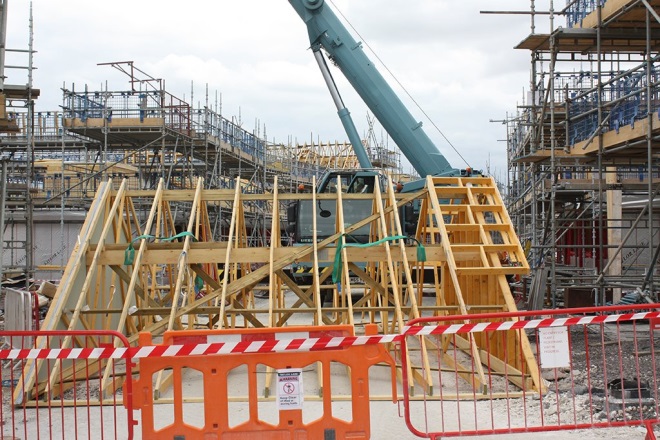Three government departments are facing an “intractable” maintenance problem, with the total bill swelling to at least £49bn.
Property failure is now a “principal risk” for the Ministry of Defence, Department of Education and Ministry of Justice, according to a report released by the National Audit Office (NAO) today (22 January).
The NAO blamed “historic underinvestment, cost increases and inflationary pressures” for the situation, as well as the Covid-19 pandemic.
The public spending watchdog warned that improving the buildings, rather than just fixing them, could cost up to ten times more.
Schools account for much of the £49bn hole (about 88 per cent), the NAO said in its report on maintaining public service facilities.
Buildings including courts, museums, galleries and prisons make up the rest of the backlog.
The NAO also warned that the “scale of the challenge will become intractable” unless the government improves its data collection on buildings at highest risk.
Deferring vital maintenance, it added, could inflate the cost of that maintenance by 1.5 times over four years.
For instance, NHS England’s maintenance backlog has increased by an average of £908m per year in the years between 2014/15 and 2023/24.
The NAO blamed the growth of the backlog over the past decade on short-term thinking and a tendency by some departments to invest in new buildings rather than old ones.
Geoffrey Clifton-Brown, chair of the Commons’ Public Accounts Committee, called on the government to “urgently break the cycle of short-term thinking, dither and delay”.
“[That] only leads to spiralling future costs,” he said.
The £49bn bill is the same value as around a quarter of the government’s entire freehold property portfolio in March 2023, which was worth £189bn. It also equates to about 4 per cent of the government’s entire expenditure in 2023/24.
Government departments also came in for criticism for their record on data collection, which the NAO said was “incomplete, out of date, and use[s] inconsistent definitions”. This, it warned, was hindering effective funding decisions on the buildings in most urgent need.
Departments also use “different costs” in calculating the backlog, making comparisons impossible across government, the NAO said.
But it praised plans by the Office of Government Property (OGP) to roll out InSite – a data collection system – across central government. The OGP has committed to implement the system by March, after it was delayed from the original start date of 2021.
Although the OGP also has a Better Buildings programme aimed at improving data quality, the NAO said the organisation was “slow to progress the programme and had limited levers to encourage change across departments”.
Last week, members of the House of Lords demanded urgent action to repair historic religious buildings “at risk of neglect, decay or inappropriate development”. A recent report revealed there are now 4,891 entries on the English Heritage risk register, including 1,442 buildings and structures.
In 2023, hundreds of schools fitted with reinforced autoclaved aerated concrete (RAAC) were found to be at risk of collapse, with more than 100 were closed days before the start of term. Some 24 hospital trusts were also told to draw up emergency evacuation plans.
A government spokesperson said: “We are taking immediate action to remedy the state of disrepair found across the public estate, which is the result of long-term underinvestment in maintenance and upkeep.”
They added: “As part of this, we are already investing billions of pounds to deliver critical repairs and rebuild our public services, to tackle maintenance backlogs and improve our hospitals, schools and prisons, as we deliver on the Plan for Change.”

